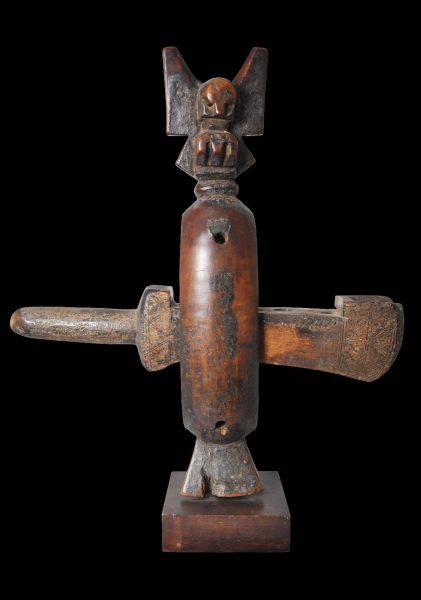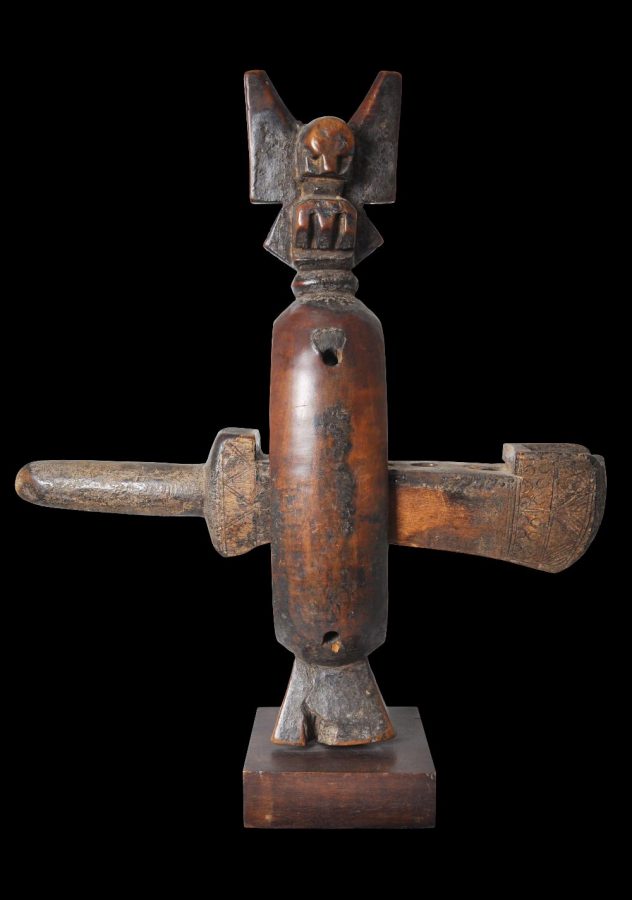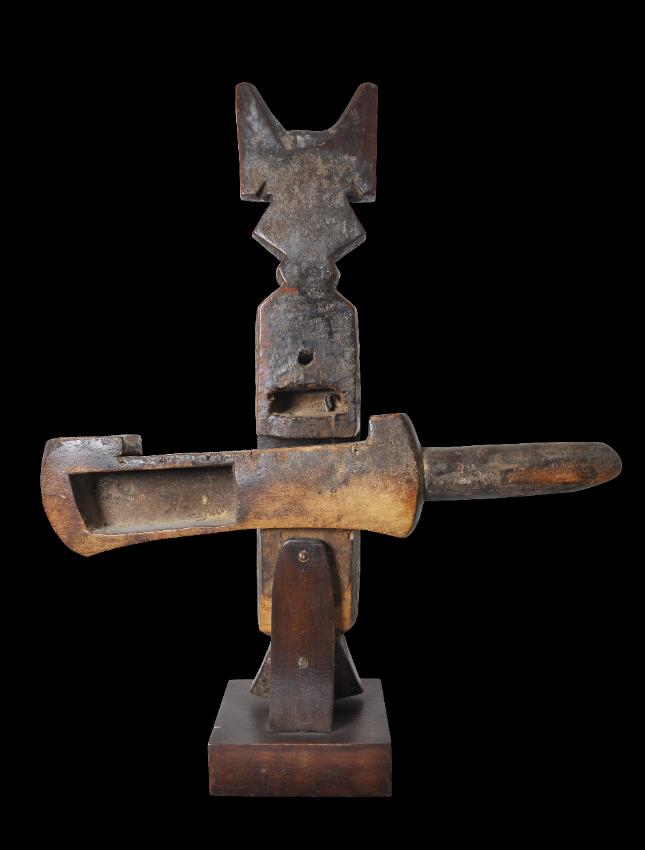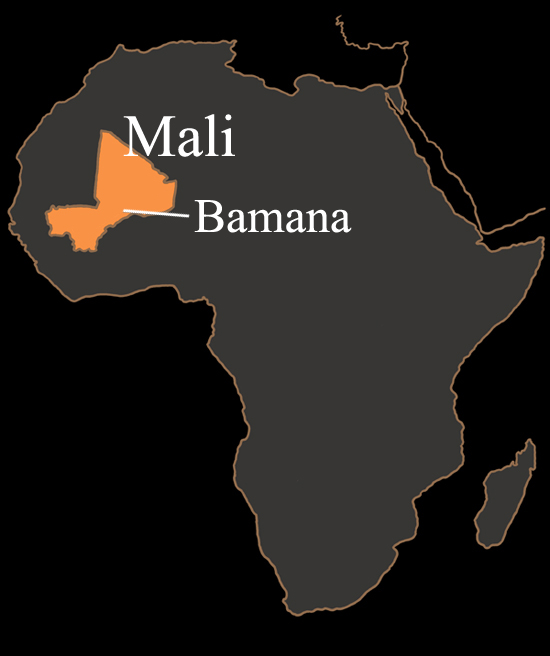Enquiry about object: 846
Bamana Wooden Door Lock (Konbalabala)
Bamana people, Mali circa 1920
height: 45.5cm, width: 37cm
Provenance
From a private UK collection. Acquired from Christie’s, 'Tribal Art', June 24, 1996, London, lot 67.
The vertical section of this door lock comprises a stylised female figure surmounted by an abstract face with a pair of upturned and oversized ears. This ‘face’ appaears to be based on the mask that is associated with the Bamana n’tomo initiation ceremony. The oversized ears symbolise the mythical butterfly Mpérémpéréni. The base is unusual; the triangular shape represents the head of the python Mignan, which doubles as a symbol of the god Pemba.
The horizontal element is incised with geometric patterns. It slides through the vertical element where an iron pin falls into small holes to lock the door. A small key would have been used to lift the iron pin to open the door.
The lock has an excellent glossy, dark patina consistent with a 1920s dating or earlier and with use.
The form of and motifs employed in Bamana door locks usually are invested with symbolic messages despite their formal simplicity. These messages, both in abstract and representational imagery, can be deeply personal. The stylized figure is usually a representation of an ancestor whose presence is required to ensure protection from bad spirits or sorcery. An addition of animal representation such as the butterfly enhances the power of the ancestors and therefore provides additional protection. The presence on the door of a lock representing a woman was also believed to prevent the men from being unfaithful to their wives.
Such locks were given as gifts to young brides and symbolised sexual intercourse: a vertical female figure with a moving ‘male’ horizontal bolt. They were passed from generation to generation. The locks tended to be given names according to the message, ancestor or story to which their form and motifs referred.
This rare anthropomorphic door lock is provocative in its symbolic form. Bamana mythology tells how the god Pemba created the butterfly Mpérémpéréni. But Mpérémpéréni was soon overcome by pride and offended Pemba, who in turn reduced the butterfly to a small and fragile creature. The butterfly also represents the deity Mouso Koroni who tried to be Pemba’s equal thus offending Pemba. Perhaps this door lock was presented to a young bride and with it came the message that to avert misfortune she should avoid offending her husband.
About the Bamana
The Bamana people live in West Africa, primarily in Mali. They also live in Guinea, Sénégal, Burkina Faso and Niger. They number almost three million today and comprise the majority of Mali’s population (the Bamana dialect is the dominant dialect of Mali and is even spoken by non-Bamana Malians.) Today, most Bamana are nominally Muslim, but traditional tribal beliefs also remain strong.
Traditionally, Bamana men belonged to initiation societies. They underwent ritualised learning processes concerning six prime societal concepts for the individual’s well-being and the moral conduct of life. These involved challenging sorcery, learning the dual nature of mankind, producing crops, surviving day to day realities, and regaining one’s spirit through the process of reincarnation. The goal of each initiate is to avoid the absorption of one’s spirit by god so that he can remain on Earth to undergo endless reincarnation.
References
Bacquart, J. B., The Tribal Arts of Africa, Thames & Hudson, 1998; and Ginzberg, M.,African Forms, Skira editore, 2000.
Ginzberg, M., African Forms, Skira editore, 2000





